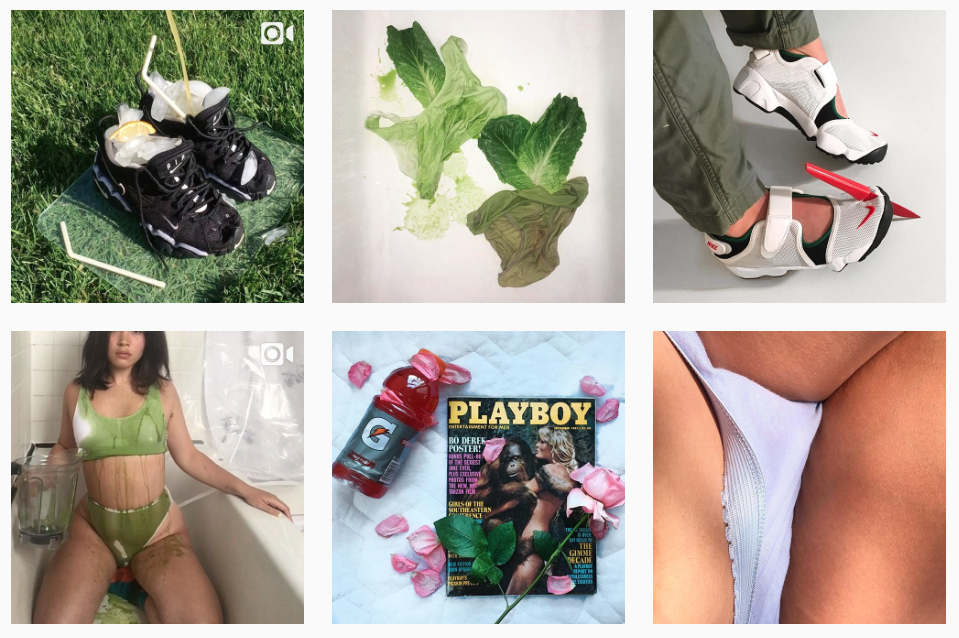
How to Take a Selfie
In Interviews • # asmr, atlantic canada, baptism, fourth wave feminism, Greta Hamilton, Halifax, halifax art, instagram, internet culture, marissa sean cruz, selfie culture, visual art, youtube
Based in Sackville, New Brunswick, Marissa Sean Cruz’s practice intersects new media, internet feminisms, and selfie culture, through video and installation works. Cruz’s practice engages in a critical dialogue about food accessibility and Euro-centricity, while it also points to questions of representation in the private-turned-public-sphere of feminized labour. Cruz makes work that is uncategorizable, interdisciplinary, sexy and repulsive. She plays up the humor of niche internet culture partly to make fun of you, and partly to access a larger dialogue about feminized bodies in cyberspace. Think futurist lipstick, vitamix blender, acrylic nails…
Your most recent work is called My Sweet Filipina Angel, a video where you make Halo Halo, a Filipino dessert, using only ingredients that were available on hand in Sackville. The video creates a dialogue about food accessibility in rural locations. More than that, you’re pointing to the eurocentricity of grocery stores, and the inability of POC or immigrants/families to access certain international ingredients.
I like to think that I am engaging in a conversation on authenticity- which is such a loaded term. I am half-Filipino and half-white, which is laden with complications when I try to think about what makes me a worthy and genuine Asian person. I also think the word authentic gets tossed around in the food world so often that, ironically the validity of it all gets lost. I am also trying to discuss food accessibility and eurocentricity in the common place of the grocery store.
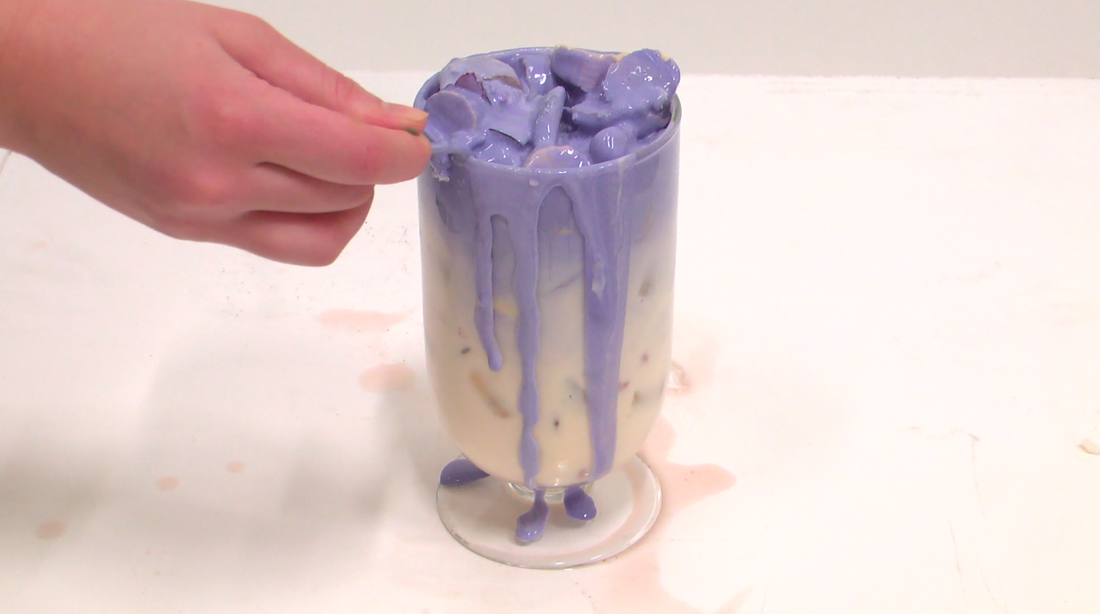
You mention that you’re working from a rural space. How is that—creating conceptual works in Sackville? How do audiences receive the work
In the town of Sackville, there are tons of people who appreciate conceptual art. Sackville is great for that. Although a great community, there is always underlying indicators of eurocentricity. In Sackville, the international food section is so small. To import to Sackville would be expensive, which I understand. The resources we have in this region of New Brunswick isn’t what I would eat in the Philippines. But of course, this food is also not available because it caters to a majority white population—I think that this applies to how many artists of colour in Sackville feel. Artists of colour, the very few of us, have our work placed in [front of] a majority white audience, therefore it is consumed differently. It is easy to feel otherly, in both food culture and within the discourses I choose to discuss. To be completely transparent, I wonder sometimes if I was to be making art in a city where there are people who are full Fillipino, if I would be accepted by them. I have been used to making art in this social context. The fact that a lot of the food is not available in Sackville adds to my work, it is a place where I feel unrest, unsatisfied and unsettled.
Food in your work is always presented as fragmented, and is always in relationship with your own body. Can you speak about that? Food takes on shapes and textures that connote a soft body, or juicy body, or flabby body. This makes your work really accessible in terms of representation in that you’re never placing conventional forms in your work. Instead, you play up the texture of food and use food in a way that a feminized body might be used / treated. I’m thinking specifically about the video where you dump jello out of a bowl and dribble it like a basketball on the table, but you’re also patting it, or spanking it. There is something inherently sexual about the way you use food, and I can’t always figure out why? What do you think?
It is totally sexual. I am not the first to use food in relation to feminist ideologies. Symbolism is a huge part of my art practice. I really like the texture relationships with the body and food. Food is consumable as is the human body in a visual way. I think combining the two senses is effective.
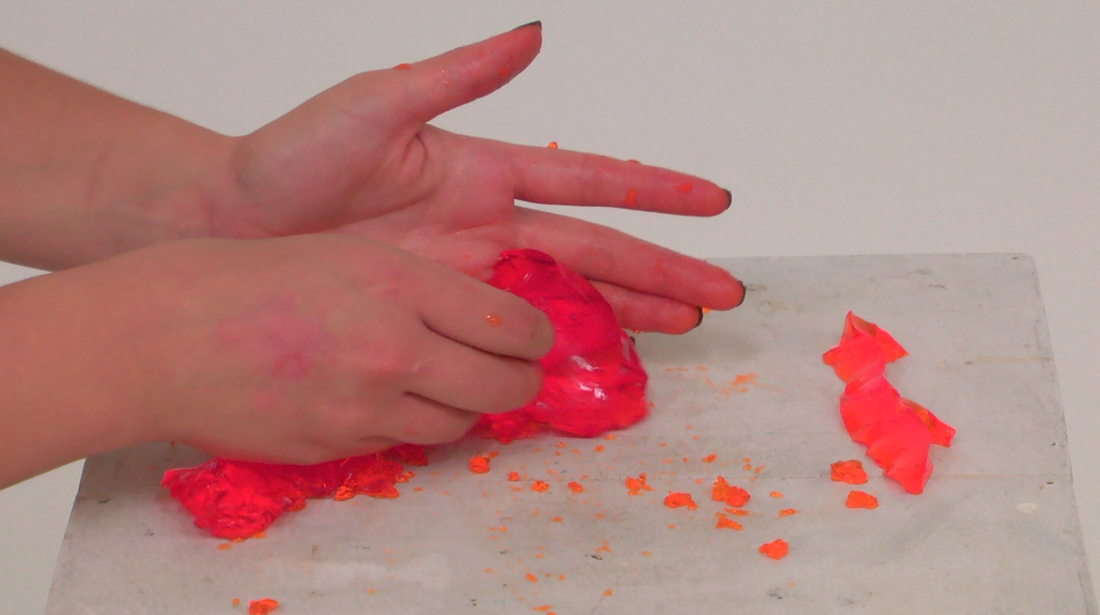
You also insert your own body into the videos you’re making. (Maybe that’s why it’s sexy? Maybe it’s actually misogynist of me to think it’s sexy, in the sense that I’m sexualizing objects that seem implicitly feminized? Maybe you’re deconstructing that?) In your sculptural pieces, like the hot dogs in pantyhose, there’s a feeling of the absence of the human form, in the sense that you’re superimposing body-like shapes into materials produced by humans, made to be put on a human, but there’s nobody there. In that way it’s kind of uncanny. Have you thought about that?
I don’t think it’s misogynist to think what I am doing is sexy or to find sexualized human forms in my work. I am playing around with attraction and repulsion as ways to confront casual spaces and rear some suppressed sexual desires. So I think it’s perfect that you are unsure why you are intrigued in that way. I think that there is sexuality in the mundane. I do think about superimposing the body [in the] shapes I create. Everyday objects can be obscured and activated in ways that may perturb the viewer of their, maybe unsettling but very human, relationship with pleasure and fantasy.
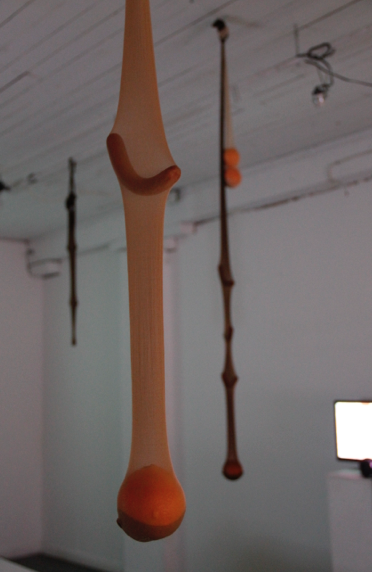
There’s also the video where you’re standing on a bed of sliced deli meat, bologna I think, wearing a pair of stilettos singing “if you think I’m sexy, and you want my body, come on baby let me know.” Firstly, so funny. But secondly, only a fragment of your body is present through your voice, which catches up with the lyrics occasionally, and sometimes loses them. There’s a tension there, where your feet are destroying the deli meat, while you dance to a song the way you would dance in a club, but you sing to yourself quietly like you’re alone in the shower. It’s all contradictory—public vs private, body vs fragmentation, sexy vs disgust. And much with all of your videos, part of me wants to stop watching them, but I can’t. I think thats a really unique sensation to have when looking at art.
Yeah I like to think I am funny. Humour is something I have tried to embrace over the past year. When I first got accepted into university for fine arts, I was very intense and serious in terms of the way I worked. Now I see humour as a vessel to communicate to an audience. I like making people laugh out of discomfort.
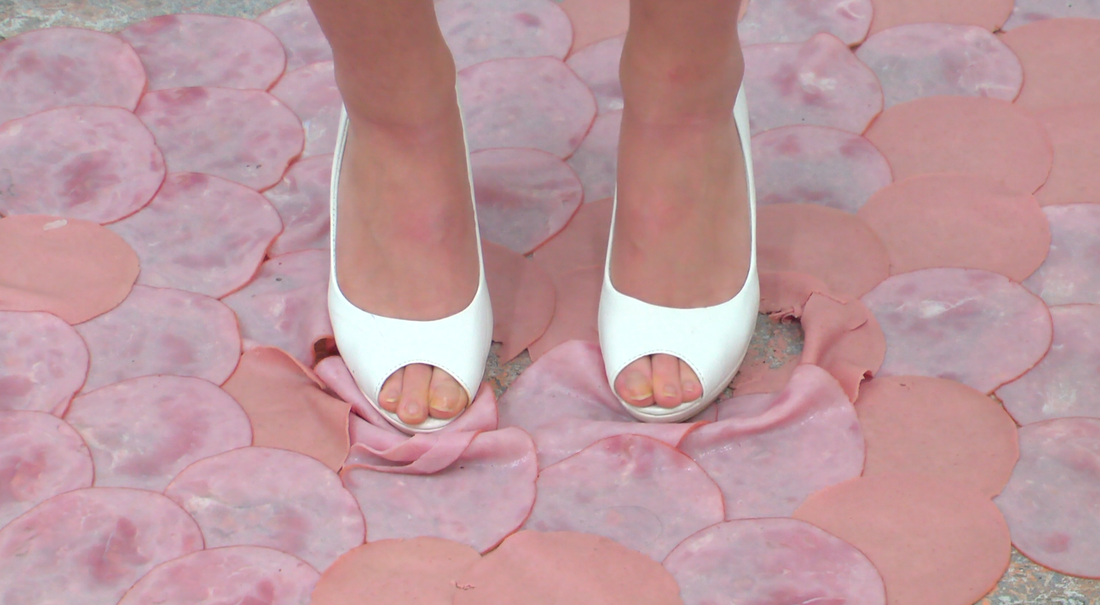
There’s a project called Fuzzy that I’m interested in. Could you explain how that performance occurs? Or is the artwork the final images rather than the performance? In that case, how did you end up with those images? It’s vermicelli noodles right?
In Fuzzy, I cut up a bunch of pieces of thin strips of paper. The labour of cutting all those pieces of paper was my intention of using that particular material. Changing its shape and having it conform to my frame was like making a sculpture out of my body. I put on nude pantyhose and added the paper into the pantyhose and onto my face. I then played the video back in reverse. The paper was scratchy and pantyhose tight. Generally pretty uncomfortable, but vermicelli would’ve changed it entirely. This was one of my first explorations into the public/private space dynamic. I did this at the beginning of my second year and hadn’t even considered using food in my art yet. If I was going to do it again, I’d do it naked.
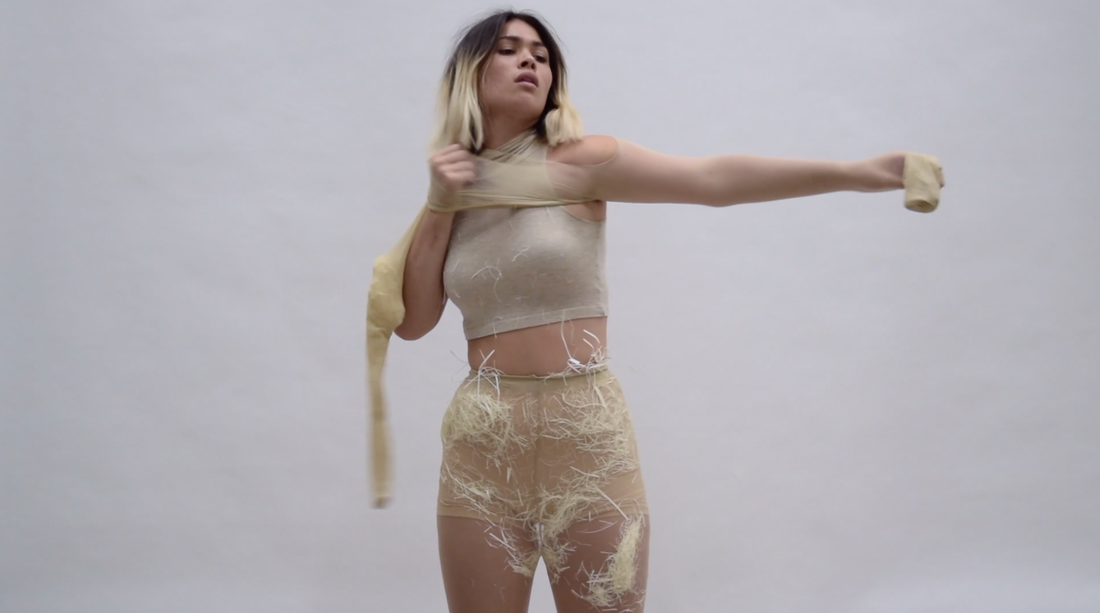
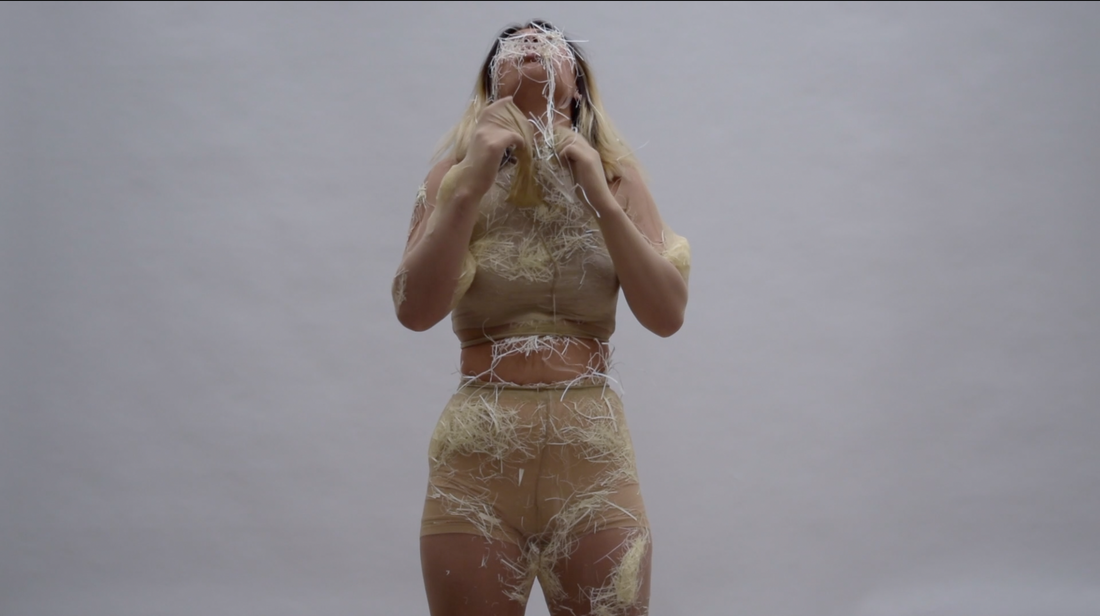
How does your instagram relate to the self-performance and self-curating in your art practice?
I think the immediacy of social media is really intriguing. The exploitative nature of it all is exciting. It is truly a performance. It is accessible for all, anyone can use it and everyone is performing. It is the invasion of public and personal space that I feel so compelled to continue intruding. Most of my photos on Instagram are staged, it’s all faked and repositioned. I like the idea of this falsified sense of privacy. It gives me that similar feeling of driving in the car and picking your nose at a stop light, thinking no one can see you but there are windows all over. It’s disturbing and kinda provocative. People can roam anonymously on my page, it’s an interesting way to comment on surveillance.
You do a series of videos called “web me,” under the pseudonym Angel Fraser, where you film yourself singing and dancing in different settings using the superimposed image setting on photobooth. I think this is a really funny concept, and really in tune to the internet culture of “selfie feminism” and “fourth wave feminism,” like Molly Soda or Petra Collins, (who have become pretty problematic figures in terms of internet feminism, in that they’re conventional about the bodies they portray), but no less there are parallels in your work. Do you feel like you’re embodying a feminist narrative in your work? At least in terms of representation?
I had a hard time identifying with feminism growing up. It was and is really confusing. That was because I came from white dominated spaces, where the feminism from those areas did not recognize other racialized intersections or if it did, it felt tokenizing. I felt like the Asian parts of me were reduced and that was damaging to my own understanding of my identity. I was fortunate to have the opportunity to educate myself and find feminist role models.
Molly Soda and Petra Collins are artists I get compared to a lot. I am aware of the feminist criticism of these artists as they use mainly conventional bodies in their work—conventional being white, able-bodied and thin. I find it weird when people compare me to them. It is the reminder that I can pass for being white. Again, I consider white feminism and I must re-engage with my advantages as a biracial individual. I try my hardest to acknowledge this when making my work. Passing is confusing and complex, culturally I feel like I do not belong on either sides of things.
My body type is trendy and I acknowledge that, I have a thin waist and big thighs, big butt, whiter skin than most Filipino people. In the in the summer my skin is dark again, I am treated differently depending on the season. I am always going to build my work based on my constituents, a thick, able-bodied, biracial, cisgendered woman. It is not my place to make work that does not revolve around me and my experiences.
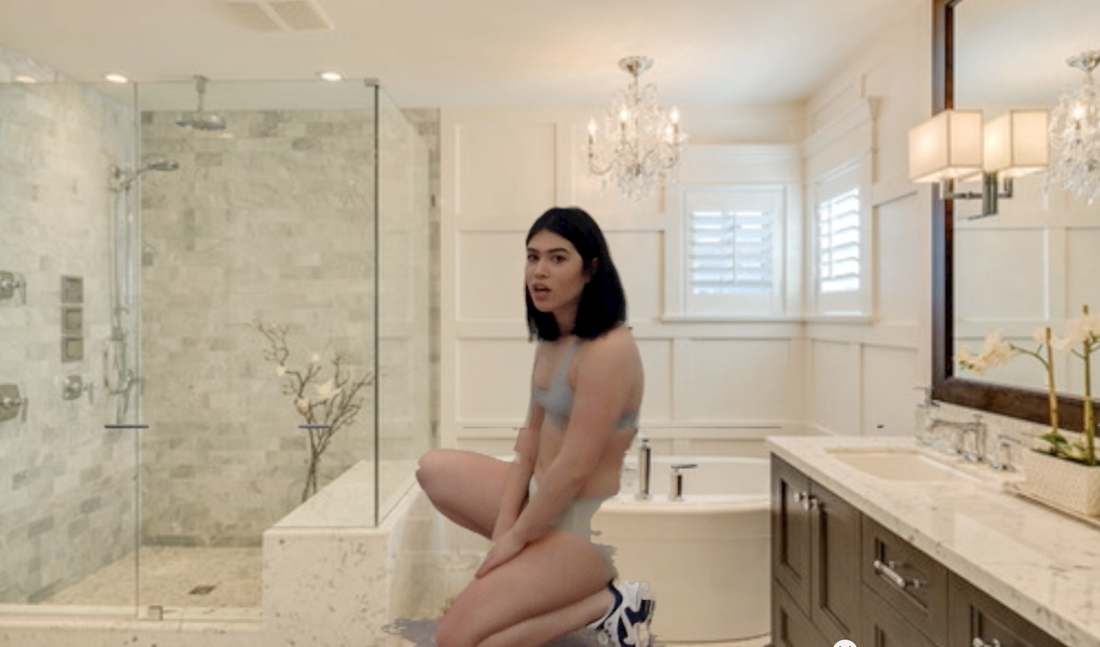
What I like about your work is that it doesn’t take itself seriously in the way some other internet narratives do. Could you talk about the humour in your work? You’re also singing and dancing to pop music, and one of the songs is “do what you want to my body.” You really divert the male gaze in this, in that the work is uncategorizable. It’s not pornography, it’s not a home video, some videos are borderline ASMR but in an anti-ASMR way—it’s a really niche part of the internet that you’re making fun of, and because it’s so funny rather than sexy (likewise the food is disgusting AND sexy therefore funny), I think you’re divert the male gaze, possibly in a way that men might not understand, or at least in a way that’s difficult to understand if you’re not in tune to femme internet culture.
I really love the internet. I think that it’s a funny place and my audience could potentially be in on the joke. Although I am commenting on a niche market, to see what I am referencing is possible. It is online for you to log in and check out, it is waiting for you. I love when people understand what part of the web I am talking about, but it’s also really interesting when they do not. I also think the term ‘male gaze’ is really hilarious… The term is used so haphazardly. What is so great about the internet is that it is not just the male gaze but an autonomous looking. I hope to make work poking fun at the idea of the male gaze, perhaps under the title of “glazing”. Probably will be glazing my foot like a ham.
I don’t think I have a narrative yet, I need more time. This time last year I was making drastically different stuff. I mean I have only completed my second year of university so to think I’ve got it sorted out would be pretty ridiculous of me. Maybe in a few years… A decade… or when I’m dead someone will have an idea.
There are some Angel Fraser videos that act as instructional videos called “how to please your partner.” To me, those are really ASMR/anti-ASMR. A lot of sex work happens online now, with cam girls and ASMR girls getting patrons, or even instagram models being paid by patrons or commercial companies. Your instructional videos remind me of a combination of online sex work and a genre of self-help videos made by women for other women. I’m thinking like make-up tutorial videos, skin care recommendations, thrift store hauls, etc. There’s something really beautiful and always funny about this—you’re making this work for other women, or at least creating a small community of people that will really understand the intention of your work—probably those who are underserved / misrepresented, and who can be better represented by online platforms. Also, because your work is so funny, again, it diverts the exploitation the internet can cause.
I love Youtube. All of my friends know that I am always on there, I have stayed up all night on there. I love ASMR and listen to it all the time. When I am on Youtube I typically watch tutorials, storytimes, vlogs and fashion hauls from women. In my series I try to dismantle feminine ideals by referencing some of these videos. I really do love these videos for some weird, materialistic and potentially superficial reason. I think that’s really fascinating. In the clips I use objects, or perform actions and backdrops to unsettle one’s expectation. I salivate, I defecate, I pick the plaque out of my teeth, pull off long bloody acrylic nails… These activities are pretty mundane in my opinion but are not usually seen on the internet like that. I don’t want you to stop looking. I am on Youtube for you to survey me and all of me, exploit me and to watch me.
web me was actually a physical performance. I am reluctant to use the word performance without using the word physical because when I am on the internet in this way, I don’t think that I am capable [of not] enacting, staging and performing. My body was physically present in this moment.
I had my audience bring in their personal laptops to the space. I placed the laptops in a circle, all playing a different video of mine simultaneously, with sound from the external speakers. I dressed in the same underwear outfit with sneakers on that I wore in my videos. I walked around the gallery space with my flashlight on my phone shining on me in that classic selfie pose. I walked around the space replaying all the videos when they ended and my audience viewed the clips as I weaved through them.
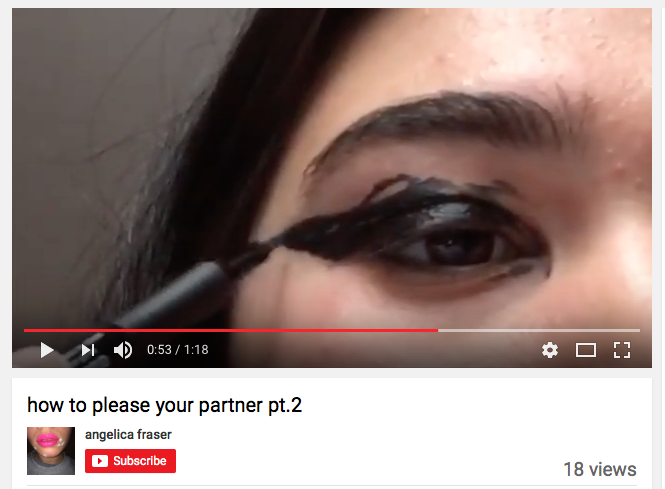
In the last “web me” video you stand topless in the back of a church with your arms stretched out like Jesus crucified on a cross while pop music plays. I wonder what your relationship with religion is, specifically Christianity and some of its icons/rituals? It also comes up in Holiness and Wholesomeness, where you use milk to perform a baptism on yourself. That work ties together all the themes you focus on; sex, food, ritual, performance, womanhood, all while you place yourself in a natural landscape. I think that’s the only landscape that isn’t artificial. Anyway, you’re sort of cleansing yourself of your sexuality or womanhood while you stand there, a historically sexualized body in underwear, blending into the landscape and devoting yourself to traditional Western family structures. What is this complicated relationship you have to Christianity? How does milk tie into your cleansing ritual? What kind of purification process are you undergoing?
My family on both sides are religious. This religion is practiced differently in both my fathers and mothers households. Asian Christianity and the kind of white Christianity where they send you to camps or schools, don’t like when you say the word God in vain, can’t have boys in my room ever. It is something so close to me but I never really related to it. I think on my dad’s side it was more about discipline and resourcefulness. On my mother’s side it was more about support and good samaritanism. So there were differences on how religion was introduced.
I think the most confusing part was navigating sex. In the Christianity I experienced it was to be saved until marriage. I felt a lot of shame after losing my virginity.
It’s true, I wanted to baptize myself as a cleansing ritual. I used sheets, as they are objects of comfort. I think the milk is a symbol of motherhood, purity and nourishment. The day I filmed this video it was like minus twenty—it was freezing but that was part of it. I like to think of it as a cleansing of sexual actions.
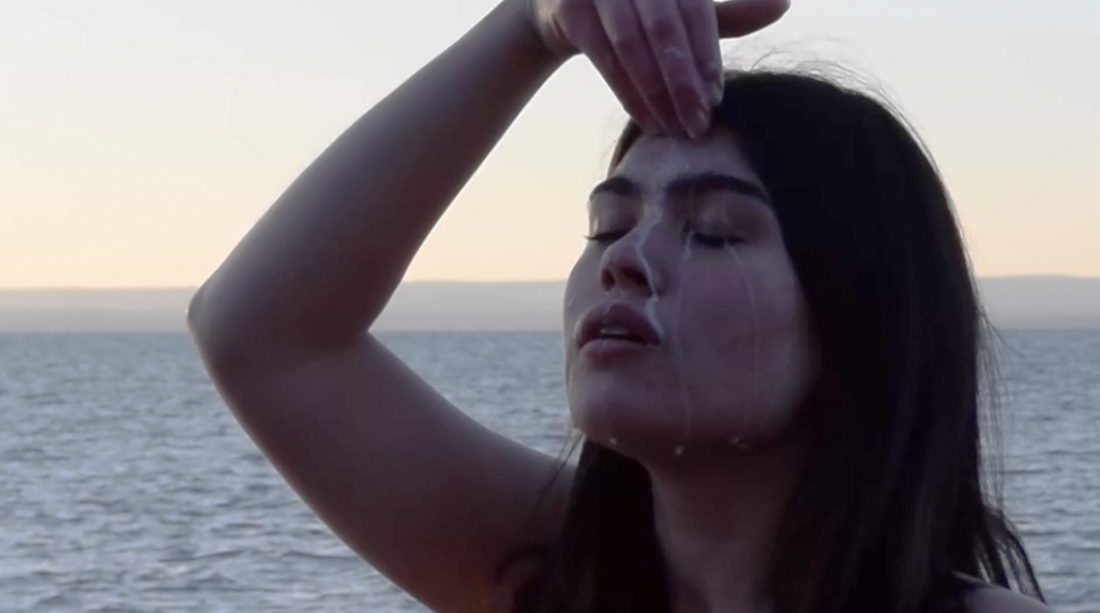
Future plans? Dreams?
I am currently a START Gallery coordinator in Sackville. I am also trying to start a jury-less gallery in the basement of my apartment next year. It’s musty down there, but for one-night projects, installs or performances it’ll be alright. I hope to have another show in Sackville and would be really excited to get some of my work in Halifax. I hope to acquire a selfiestick.
This abridged interview was conducted via email in June 2017.
Marissa Sean Cruz is a Filipino-Canadian interdisciplinary artist based in Sackville, New Brunswick, where she focuses on film and sculpture. Work available here
Greta Hamilton is a writer and artist based in Toronto, ON.
~
~